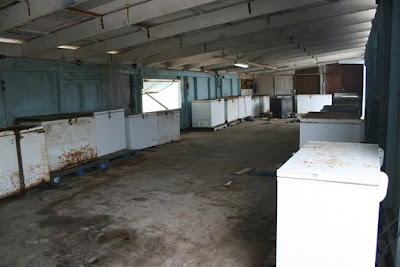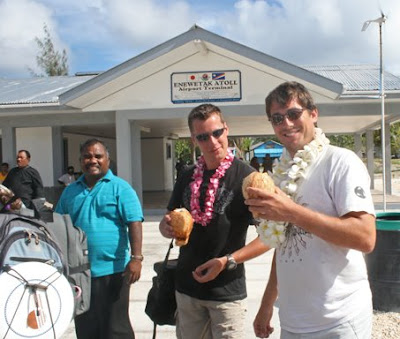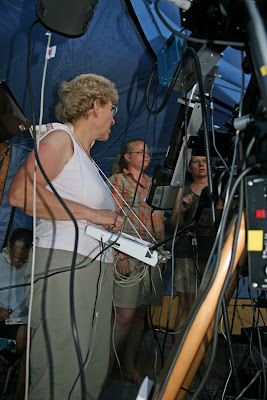by Beverly Lynn-Wilson
Member of the Friends of the Institute for Astronomy
The next solar eclipse takes place on July 11, 2010, across a swath of the South Pacific. This piece commemorates another July 11 eclipse, visible from the Big Island and the east end of Maui in 1991.
While we set up camp in a remote area of Maui, my college-aged daughter, Debbie, and I tried to block out a man blasting his off-key voice and miss-strummed guitar notes through an elaborate sound system. Along with a few hundred other people on the evening of July 10, 1991, we’d come to a temporary campground to witness a rare total eclipse of the Sun to take place soon after sunrise the next morning.
High up on a bluff overlooking a black sand beach and crashing waves, we were in the eclipse totality zone on a tiny strip along the southeastern edge of the island in a remote area called Kaupo. If you’re looking toward the ocean when you drive through Kaupo, you miss downtown’s single building, a picturesque general store that is open only three hours a day. You don’t want to miss downtown, though, when it’s been so much trouble to get to Kaupo. Although it’s only fifty miles from Kihei, where my parents lived, the trip takes two hours and is best made in a four-wheel drive vehicle. The last thirty miles are narrow, winding, and full of potholes in which you could easily lose a small child. Cattle have the right-of-way on this road and often take it.
Debbie and I moved gear up to the front seat of our Explorer and made up a bed in the back. We chatted with other campers while standing in line at portable johns. The big excitement of the evening was watching the police try to find more gas for their floodlight generator. The rock star never-gonna-be eventually turned down his amplifiers and croaked out some softer tunes.
Debbie and I admired our view of the stars and set the travel clock alarm so that we would be sure to wake up in plenty of time to witness the event. Eclipses of the Sun occur every year or two, but the totality zone is narrow and usually goes through the middle of an ocean or some remote mountain or desert.
Seeing a partial eclipse simply isn’t the same; you can go about your normal activities without ever realizing one is happening. Total eclipses are dramatic and awe inspiring, so I’d been told by those who had seen one. Debbie and I went to sleep in great anticipation of tomorrow’s celestial event.
We woke up at 2:30 a.m. when rain blew in the windows and onto our faces. But we went back to sleep, sure that this was one of those night showers common to many areas of Maui. After all, it never rains in Kaupo in July. It may rain a few miles away, but this is always where the rain stops and beautiful rainbows arch across the sky.
We awoke at first light to visions of dense gray clouds as far as we could see in all directions. The Sun must be up, but where was it? We got out the compass to determine where it should be. It wasn’t there—or anywhere else. Maui, the Sun god, apparently had left for Cabo San Lucas.
Debbie and I got breakfast out of the cooler and ate sitting in the bed in the back of the car. The rain seemed to be letting up. Maybe this would clear in the next hour.
When the appointed time arrived for the beginning of the eclipse, we searched for a break in the clouds but saw only a new gray wall moving in off the ocean. Then about 7:15 it got noticeably darker. Those of us left at the campground—dozens had already departed—got out of our cars to have a clear view, in case we could see anything. Two dogs who had been sitting on the ground beside a truck climbed into it and went to sleep.
I shot photos of clouds in all directions while my light meter steadily plunged. I knew when totality arrived because the light meter no longer registered, even with the lens wide open. It wasn’t dark like night but more like immediately after sunset, before the sky turns black.
In a minute it was light again. Totality was over. Debbie and I packed up and joined a three-mile line of cars doing fifteen to twenty miles an hour in the rain. (In good weather you’re lucky to get up to twenty-five miles an hour on the straight stretches.) No one honked or cursed or squealed tires. We were part of a huge, silent snake winding across the open slopes of Haleakala volcano, pausing occasionally until cows decided to amble off the road.
We finally reached Kula, where we should have had a view of most of Maui and three other islands. Nothing but gray—no islands, no West Maui Mountains, no valley, no coastline, no top of Haleakala. Only one big gray cloud.
Debbie and I told each other that when we got home to Kihei, we could watch the live television coverage that my parents were taping. Reporters were watching the eclipse from the totality zone on the Big Island. And we did exactly that, right up until the tape ended shortly after totality started. The electricity in Kihei had gone off due to the rain, and the recording had stopped. The power didn’t come back on until after the eclipse was over.
My brother and his family, who had gone to the Big Island to watch the eclipse, would be flying back to Maui later in the day. Don had consulted numerous experts about the best place to see the phenomenon. This evening we could watch his video. We thought.
“This black cloud moved over the Sun right before totality and didn’t move off until totality was over,” Don said. “The only people who saw the eclipse were ones lying around the pool at our hotel in Kona—and they didn’t even know what was going on.”
The weather service people expressed surprise at such unseasonal weather. They apparently consulted only scientific instruments, instead of Pele, the volcano goddess. Since she is extremely jealous of Sun worshippers, it might have been prudent to ask about her plans for the day.
The next day my father, Debbie, and I took a helicopter trip around East Maui. We had a clear view of where we had camped—with the Sun shining down on it. We picked up my printed eclipse photos on the way home. The set included the widest range of gray shades that have ever been photographed.

































